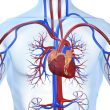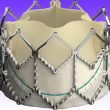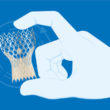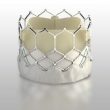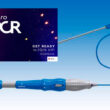This last year, new data in structural heart disease gave way to changes in practices and new hypotheses, when not simply further justified the already existing evidence. In this new editorial section, we share the most relevant of last year’s works to keep you up to speed on the main topics in the field. The<a href="https://solaci.org/en/2022/01/05/the-most-relevant-of-2021-in-structural-heart-disease/" title="Read more" >...</a>
TAVR vs Sutureless Surgical Aortic Valve Replacement in Low-Risk Patients
Sutureless surgical aortic valve replacement (SU-SAVR) has been designed to make surgical valve replacement easier and faster, especially compared against conventional biological valves which require multiple sutures; their rapid deployment translates into reduced cross-clamp and operative time. These valves shorten operating time and are less invasive than conventional surgical valves. Except for sternotomy incisions, they<a href="https://solaci.org/en/2021/11/19/tavr-vs-sutureless-surgical-aortic-valve-replacement-in-low-risk-patients/" title="Read more" >...</a>
TCT 2021 | SURTAVI: Good News for the Self-Expandable Valve at 5 Years
After a 5-year followup, the transcatheter aortic replacement (TAVR) with the self-expandable valve has offered clinical outcomes similar to surgical aortic valve replacement (SAVR) outcomes for intermediate risk patients. As we already knew form the 2-year followup, the all-cause or disabling stroke rate at 5 years between TAVR and SAVR continued to be similar (31.3%<a href="https://solaci.org/en/2021/11/09/tct-2021-surtavi-good-news-for-the-self-expandable-valve-at-5-years/" title="Read more" >...</a>
Device Evolution Also Impacts on Valve in Valve
TAVR to treat dysfunctional biological prosthetics (ViV) with the last generation self-expandable supra-annular prosthetic offers excellent results both clinical and hemodynamic. In addition, there were additional reductions of paravalvular regurgitation compared against the original models. The present registry published in JAHA is the most extensive to treat this issue and replicate outcomes from the clinical<a href="https://solaci.org/en/2021/10/21/device-evolution-also-impacts-on-valve-in-valve/" title="Read more" >...</a>
Failed Aortic Bioprosthesis: Valve in Vale or Repeat Surgery?
The Valve in Valve (ViV) technique seems to be a better option than repeat surgery for failed aortic bioprosthesis. While this strategy lacks long-term evidence to address issues such as durability, it is considered as an option especially for young patients. ViV to treat failed surgical bioprosthesis has shown lower in-hospital mortality compared with repeat<a href="https://solaci.org/en/2021/10/20/failed-aortic-bioprosthesis-valve-in-vale-or-repeat-surgery/" title="Read more" >...</a>
The FDA Approves a Third Device in the TAVR Race
The Portico self-expanding graft has obtained FDA approval and can now compete as one of the three options available in clinical practice for transcatheter aortic valve replacement (TAVR) in the United States. For the time being, its indication will have some restrictions: for example, it can only be used in high-risk patients (unlike CoreValve and<a href="https://solaci.org/en/2021/10/06/the-fda-approves-a-third-device-in-the-tavr-race/" title="Read more" >...</a>
SAPIEN 3 Ultra: Lower Incidence of Paravalvular Regurgitation?
Paravalvular regurgitation after transcatheter aortic valve replacement (TAVR) have historically been associated with worse clinical outcomes. Even mild leaks have been shown to be harmful. This study looked at a real-world experience with the transcatheter heart valve SAPIEN 3 Ultra in the US. The SAPIEN 3 Ultra is a new generation balloon-expandable heart valve with<a href="https://solaci.org/en/2021/09/17/sapien-3-ultra-lower-incidence-of-paravalvular-regurgitation/" title="Read more" >...</a>
EuroPCR 2021 | Evolut Low Risk: Two-Year Results of The Self-Expanding Valve in Low-Risk Patients
Transcatheter aortic valve replacement (TAVR) with the Evolut self-expanding valve was non-inferior to surgery in patients with low surgical risk. After two years, the primary endpoint of death or disabling stroke was similar between both strategies. This presentation at EuroPCR 2021 reinforces the results presented during the American College of Cardiology (ACC) 2019 Congress and<a href="https://solaci.org/en/2021/05/27/europcr-2021-evolut-low-risk-two-year-results-of-the-self-expanding-valve-in-low-risk-patients/" title="Read more" >...</a>
Can We Deal with Learning Curves in Acute Stroke?
When an interventional cardiology center, where interventional cardiology specialists work alongside neurologists and radiologists, start a thrombectomy program in acute stroke, results achieved are similar to those at an interventional neurology center. Mechanical thrombectomy has proven to be the best treatment option for acute ischemic stroke. However, it is not widely available, mainly due to<a href="https://solaci.org/en/2021/05/17/can-we-deal-with-learning-curves-in-acute-stroke/" title="Read more" >...</a>
Validating Consensus on Post TAVR Conduction Disturbances in the Clinical Practice
Little over a year ago, JACC published the expert consensus on the management of post transcatheter aortic valve replacement (TAVR) conduction disturbances. This publication homogenized criteria and was welcomed by operators who, when in doubt, tended to prematurely indicate definite pacemaker implantation or delayed discharge in order to monitor patients. These criteria, however, was nothing<a href="https://solaci.org/en/2021/05/12/validating-consensus-on-post-tavr-conduction-disturbances-in-the-clinical-practice/" title="Read more" >...</a>



